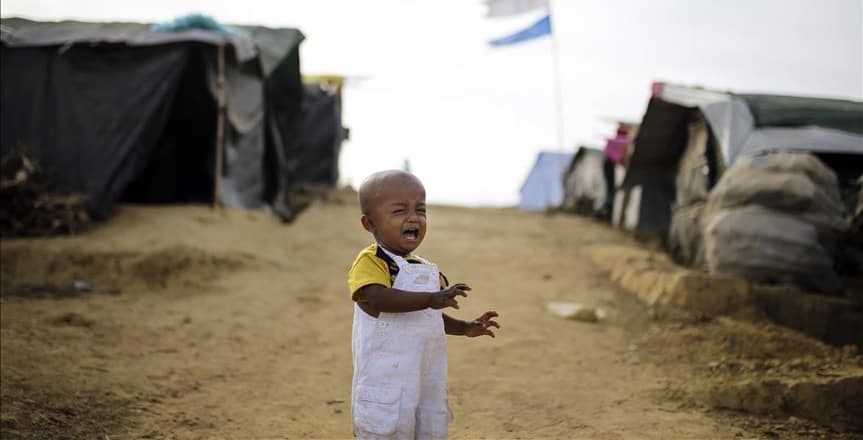Last updated on September 11th, 2021 at 08:31 am
An estimated 108,037 Rohingya kids have been born in refugee camps in Bangladesh and Myanmar over the previous numerous years amid unsuitable dwelling conditions, in accordance to a new study.
They have restrained access to schooling and healthcare, no freedom of movement and are nearly entirely established on aid, an analysis with the aid of the humanitarian useful resource employer Save the Children found.
Save the Children analyzed populace statistics from the refugee camps in Bangladesh seeing that August 2017 and the displacement camps in Myanmar’s Rakhine State on the grounds that 2012 to mark three years on account that greater than 700,000 Rohingya fled Myanmar in the wake of brutal violence which the UN has described as a “textbook instance of ethnic cleansing.”
There are currently an estimated 75,971 youth under three years historical in the refugee camps in Cox’s Bazar, or 9% of the total refugee population, almost all of whom were born after their moms fled from Myanmar, the study added.
More than 1 million Rohingya refugees are residing in Bangladesh, and nearly 1/2 of them are children.
“I’m concerned about my children’s education, their future, their behavior,” Hamida Begum, the mom of three-year-old Runa, told Save the Children.
They are currently taking refuge at a refugee camp on the south coast of Bangladesh Cox’s Bazar. “I can’t provide them something they ask for as we don’t have money. We can’t fulfil their dreams. We can’t love and take care of them properly. That’s why I sense very sad.
I can’t supply them with proper food. When they ask for anything, I can’t give it to them,” she said.
Runa has suffered from continual undernutrition her total life.
In Myanmar, displacement camps in Rakhine State have been housing Rohingya Muslims as properly as Kaman Muslims given that 2012 following preceding waves of ethnic violence.
Using UNHCR statistics from Myanmar up to December 2019, Save the Children estimates there are 32,066 youngsters under seven years of age spread throughout 21 camps, representing over 25% of the displaced population.
“The start of a infant is a joyous event […] We train our teenagers to dream big, however for a infant who is aware of nothing but a refugee camp, many of their hopes and goals will seem out of reach.
The humans and authorities of Bangladesh welcomed the refugees when they fled violence in their home country, but three years on, we are no nearer to a sustainable solution to this refugee crisis,” said Onno van Manen, Bangladesh Country Director for Save the Children.
“Rohingya adolescents and families should be capable to return to their residences in Myanmar voluntarily and in a secure and dignified manner.
World leaders – in particular those with close ties to Myanmar – should do the whole lot they can to encourage a swift resolution to this crisis.
We can’t allow the years to pile up and for adolescents to spend their entire childhoods in confinement,” Manen said.
Nay San Lwin, co-founder of the Free Rohingya Coalition, told Anadolu Agency that “they (Rohingya children) all deserve the conditions all global citizens have.
Unfortunately, the world’s leaders are failing us.” “Formal training for the kids is very important.
I noticed a lot of gaining knowledge of facilities in the camps, however these are not going to help improve [their] education,” he said, including these teens “won’t have a future at all except the world unites to act in opposition to the ongoing genocide in Myanmar.”
(AFP)

